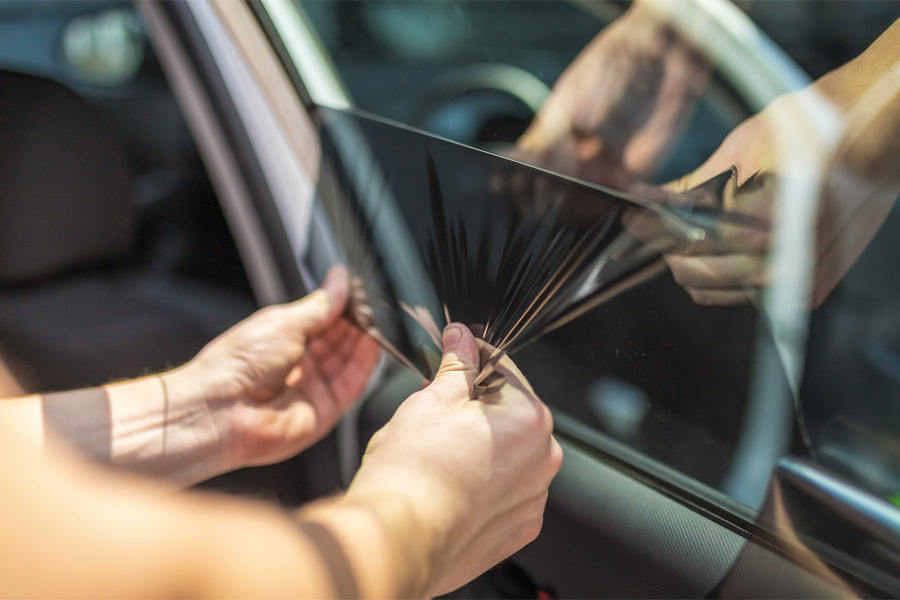The Science Behind Vehicle Window Tinting and UV Ray Protection
The Science Behind Vehicle Window Tinting and UV Ray Protection
Blog Article
Home Window Tinting Regulations and Standards: What You Required to Know Before Tinting Your Car
Prior to proceeding with window tinting for your lorry, it is vital to familiarize on your own with the varied regulations and standards that control this method across various states. These policies dictate the acceptable degrees of tint darkness, often gauged by visible light transmission (VLT) portions, and consist of certain stipulations for front windscreens intended at making certain roadway safety.
Summary of Window Tinting Laws
Home window tinting laws are regularly based on variant across various jurisdictions, reflecting neighborhood guidelines and safety and security factors to consider. These legislations dictate the allowable degrees of tint darkness and reflectiveness on car windows, ensuring that drivers preserve sufficient presence while likewise protecting against unsafe UV rays and warm.
Most laws identify window tinting based on the Visible Light Transmission (VLT) portion, which suggests the quantity of light that can pass via the home window. Generally, reduced VLT percents signify darker colors. Legislations frequently differentiate between the front, side, and rear windows, with more stringent limitations used to the front windscreen to enhance safety and security for both the driver and other road users.
Conformity with home window tinting regulations is essential, as infractions can result in fines, mandatory elimination of the tint, and potential boosts in insurance coverage premiums. It is crucial for car owners to acquaint themselves with local legislations prior to continuing with home window tinting setups.
State-by-State Color Rules
Understanding the details window tinting laws in each state is essential for automobile proprietors looking for to follow the legislation. Each state in the U.S. has actually established its very own set of guidelines regulating window tinting, which can differ dramatically. These regulations commonly determine the allowed levels of color darkness, the types of home windows that can be tinted, and any kind of clinical exemptions that might use.
For instance, states like The golden state have stringent constraints on tint darkness for front home windows, while others, such as New Mexico, may enable darker tints. Furthermore, specific states mandate details visibility percentages for different home windows, consisting of the windshield, front side windows, and back windows. It is vital for vehicle owners to familiarize themselves with their state's legislations to prevent possible penalties or penalties.
Moreover, some states might need a certification sticker label to be positioned on colored windows, indicating conformity with state legislations. Failing to adhere to these regulations not just risks legal effects but can also impact security and visibility while driving. Car proprietors ought to perform extensive research or get in touch with local authorities to guarantee full understanding and conformity with state-by-state color laws.
Allowed Color Types and levels
Lots of vehicle proprietors may be amazed to learn that allowed tint degrees and kinds vary extensively across various states. Each state has actually developed its own policies relating to the acceptable darkness and reflectivity of window color, frequently determined by Visible Light Transmission (VLT) percentages. VLT describes the quantity of light that can travel through the colored windows; therefore, a lower percent indicates a darker color.

Furthermore, the kinds of color materials permitted can vary, with some states prohibiting mirror-like or metallic surfaces. It is essential for lorry owners to acquaint themselves with their state's specific regulations to make sure compliance. Non-compliance can cause penalties, necessary elimination of the color, or various other legal consequences, making it necessary to recognize these regulations prior to continuing with setup.
Medical Exemptions for Tinting
While not all states offer allocations for clinical exemptions concerning home window tinting, those that do recognize the requirement for certain individuals to boost presence and convenience as a result of medical problems. Different medical conditions, such as lupus, skin cancer cells, and certain eye disorders, can make individuals especially sensitive to sunlight. Subsequently, these individuals may call for darker tints to safeguard themselves from dangerous UV rays and glare.

It is necessary to note that despite a clinical exemption, there might still be restrictions on the level of color permitted. Conformity with state legislations makes sure that individuals are both secured and within legal restrictions. Those considering clinical exceptions ought to call their neighborhood Division of Motor Cars or equal authority to comprehend the demands and treatments required to look for an exemption successfully.
Charges for Non-Compliance
Stopping working to adhere to home window tinting regulations can lead to substantial fines, which vary by state. Police are encouraged to provide citations for lorries that do not stick to the defined tinting laws. These charges commonly include fines, which can vary from modest total up to several hundred bucks, relying on the severity of the offense and the state in question.
In some jurisdictions, duplicated offenses might lead to intensifying fines or extra charges, such as obligatory court looks. Additionally, non-compliance may require the elimination of prohibited tinting, frequently at the proprietor's cost. In severe cases, habitual transgressors may deal with suspension of their lorry registration until conformity is achieved.
Furthermore, insurance policy ramifications might develop from receiving multiple citations for window tint offenses. Insurance firms her comment is here may watch such offenses as an indication of riskier actions, possibly resulting in increased costs or difficulty in insurance coverage.
To stay clear of these penalties, it is vital for lorry proprietors to acquaint themselves with their regional home window tinting laws and make certain that their vehicle complies (Window Tinting). This continue reading this positive technique not only avoids legal ramifications but likewise promotes roadway safety and security
Final Thought

Most guidelines identify home window tinting based on the Visible Light Transmission (VLT) percentage, which shows the quantity of light that can pass with the home window. Conformity with window tinting policies is important, as offenses can result in penalties, required elimination of the tint, and potential increases in insurance costs.Recognizing the specific window tinting guidelines in each state is essential for automobile proprietors looking for to conform with the regulation. These laws usually determine the allowable levels of tint darkness, the types of home windows that can be tinted, and any type of clinical exemptions that might use.
For instance, states like The golden state have rigorous limitations on color darkness for front windows, while others, such as New Mexico, may enable darker colors.
Report this page